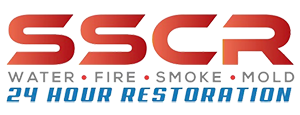Busting Myths About Water Damage Restoration
Water damage can be a stressful and overwhelming experience for any homeowner. Between dealing with the initial mess and navigating the restoration process, it’s easy to fall prey to common myths and misconceptions. To help you make informed decisions and achieve a successful recovery, let’s debunk some of the most widespread myths surrounding water damage restoration:
Myth #1: I can tackle water damage restoration myself.
While tackling minor leaks might seem straightforward, attempting DIY restoration for larger water damage events can be disastrous. Water damage often extends beyond the surface, affecting structures, hidden cavities, and promoting mold growth. We have seen situations when it looks very easy to clean, but there a lot more troubles lays beneath the surface. Professional like us possess specialized equipment, expertise, and knowledge to ensure complete and proper drying, preventing further damage and potential health hazards.
Myth #2: All water damage is covered by insurance.
While most homeowners insurance policies cover water damage, the extent of coverage varies significantly. It’s crucial to understand your specific policy details before assuming full coverage. Factors like the source of the water damage, your deductible, and policy exclusions can all impact what’s covered. Always consult your insurance provider for clarification and guidance.
Myth #3: Once the water is gone, everything is fine.
Just because the visible water is gone, doesn’t mean the problem is solved. Water can seep into building materials like drywall and flooring, creating hidden pockets of moisture that, if left unaddressed, can lead to structural issues and mold growth. Professional restoration companies utilize advanced drying techniques and moisture meters to ensure complete and thorough drying throughout affected areas.
Myth #4: All water-damaged items need to be thrown away.
This isn’t always true! The extent of salvageability depends on the type of water damage (clean, gray, or black), the affected materials, and the promptness of professional intervention. Restoration specialists can assess the salvageable potential of your belongings, employing specialized cleaning and sanitizing techniques to restore furniture, carpets, and other items whenever possible. Rea our other blog about types of water damage.
Myth #5: Mold won’t grow if I dry the area quickly.
Mold thrives in moist environments, and even seemingly dry areas can harbor hidden moisture that’s sufficient for mold growth. As a professional restoration companies we are not only focus on drying but also address any existing mold contamination using safe and effective methods to ensure a healthy and mold-free environment. Check out mold remediation service section.
Remember: When faced with water damage, seeking professional help is crucial. By dispelling these myths and understanding the complexities of water damage restoration, you can make informed decisions, ensure a comprehensive and safe recovery process, and minimize the long-term impact on your property and health.
Contact us if you need help with your property restoration after water damage, mold and more.
